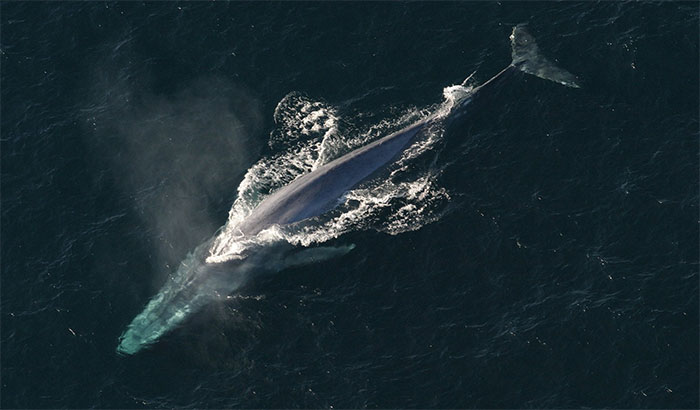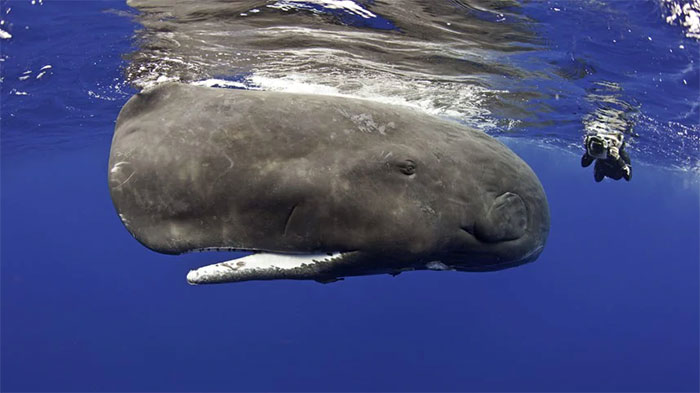Top 6 largest fish in the ocean
The vast ocean world with numerous animals makes us yearn to explore, from fierce to strange with special abilities, they gradually attract more human curiosity.
We used to know fish can glow, shrimp with a punch of thousands of pounds . And there are many other interesting things, today we will introduce you to something more special, which is information about the largest fish species on the planet.
Blue whale

Scientific name : Balaenoptera musculus
Weight: 140,000 kg (Mature) Encyclopedia of Life
Life expectancy: 80 - 110 years
Duration of pregnancy: 11 months Encyclopedia of Life
Nutrition level: Eat the Encyclopedia of Life
Length: Pieces: 25 m (Northern Hemisphere, Mature), Male: 24 m (Northern Hemisphere, Mature)
As we know, blue elephants are the largest species in the world and so they are ranked No. 1 on this list. They live in the Indian Ocean and the South Pacific Ocean, are very large in size with an average weight of about 90 tons . But they are not scary at such a huge size, the blue whale is a species that eats plankton, an adult blue whale can eat up to 40 million a day.
Spermaceti

Scientific name: Physeter macrocephalus
Weight: 35,000 - 57,000 kg (Mature)
Length: 12 m (Mature) Encyclopedia of Life
Life span: 70 years
Duration of pregnancy: 16 months Encyclopedia of Life
Nutrition level: Encyclopedia of Life omnivores
The sperm whale, or Physeter macrocephalus , is a whale ( mammal ) and of course, its size is also oversized. The main habitat of this species is in waters deeper than 1,000 m and not freezing water, in tropical to temperate waters. Their food is different from whales, in the menu of the sperm whale always appears of species such as giant squid, octopus and rays.
Sun shark

Scientific name: Cetorhinus maximus
Weight: 2,200 kg (Mature) Encyclopedia of Life
Conservation status: Vulnerable (Reduced) Encyclopedia of Life
Sunfish shark, also known as Cetorhinus maximus, is extremely large in size, but like blue whales, they are the only eaters of plankton, and they can consume small amounts of fish and animals every hour. bones up to 2,000 tons . They are less mobile, live well and are often found on the coast, so the name ' Sunfishes ' also refers to the behavior of this interesting animal.
Paddle fish

Scientific name: Regalecus glesne
Length : an average of about 17 m
Weight : 270kg
Paddle fish, also known as the Great King Fish, is a long-flattened fish that lives in deep water in the ocean and this is why it is very difficult to see them . They are a species that eats zooplankton so it is not dangerous, there is very little information about this mysterious animal, often people only detect them when they are dead or about to have a leopard, under pressure from storms and they will float. In Japan, it is believed that an oar can predict earthquakes and when an oar can appear, an earthquake may occur.
Sun Fish (mola mola)

Scientific name: Mola mola
Length: 1.8 m (Mature)
Weight: 1,000 kg (Mature)
Speed: 3.2 km / h (Maximum, Mature)
The sunfish, also known as the Moon Fish, is the scientific name Mola mola, is a large, colorful species that lives in the deep water like Paddle Fish. The reason for their name is ' Sunfish ' because most of them are found on the surface of the sea, they live mainly in tropical sea areas. In hot season, they can come to temperate zone sometimes. You can see them in the tropics. The main dishes of this great species are zooplankton, seaweed .
Whale Sharks

Scientific name: Rhincodon typus
Weight: 19,000 kg (Adult) Encyclopedia of Life
The length of an elephant shark ranges from 9–11 m
Whale shark or shark shark has a scientific name of Rhincodon typus, they belong to the shark family (cartilaginous fish) but the size is the largest. Living areas are mainly in warm or tropical regions, and during the breeding season they will move to coastal areas such as the Ningaloo reef . With their large size, they are also not a dangerous species when the food is mainly ephemeral, cuttlefish and small vertebrates, they are a typical example of the sentence i ' shark does not cause dangerous to humans '.
- The most dangerous shark killer in the ocean
- 10 most feared assassins in the ocean
- Ocean colors of 2013
- When people put the ocean to the end
- The ocean may run out of fish
- Things you do not know about marine fish statues
- 'Ghosts' in the world's deepest ocean trench
- The fish community is forgotten in the deep sea
- Sea fish are descendants of river fish?
- Life in the deepest trench of the ocean
- 7 most bizarre creatures in the ocean
- The deepest fish in the world
- These fish hold record in nature
- Discover 4 strange sea creatures with human-like teeth
 Surprised: Fish that live in the dark ocean still see colors
Surprised: Fish that live in the dark ocean still see colors Japan suddenly caught the creature that caused the earthquake in the legend
Japan suddenly caught the creature that caused the earthquake in the legend A series of gray whale carcasses washed ashore on California's coast
A series of gray whale carcasses washed ashore on California's coast Compare the size of shark species in the world
Compare the size of shark species in the world